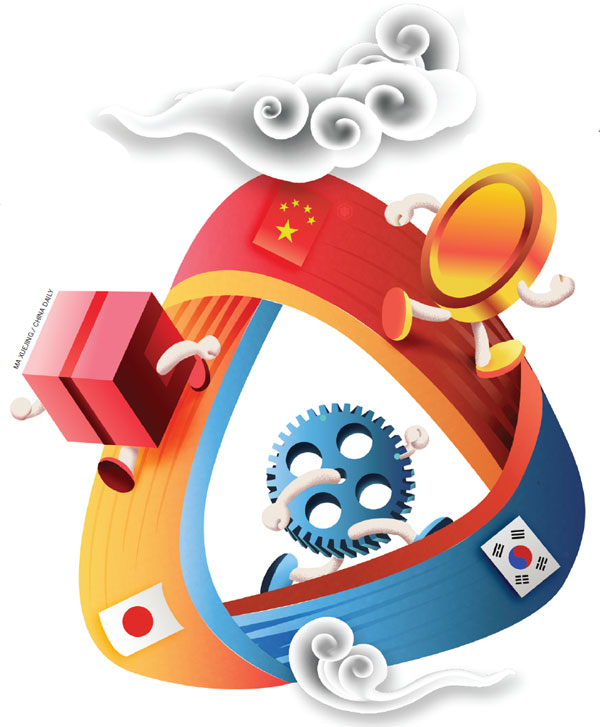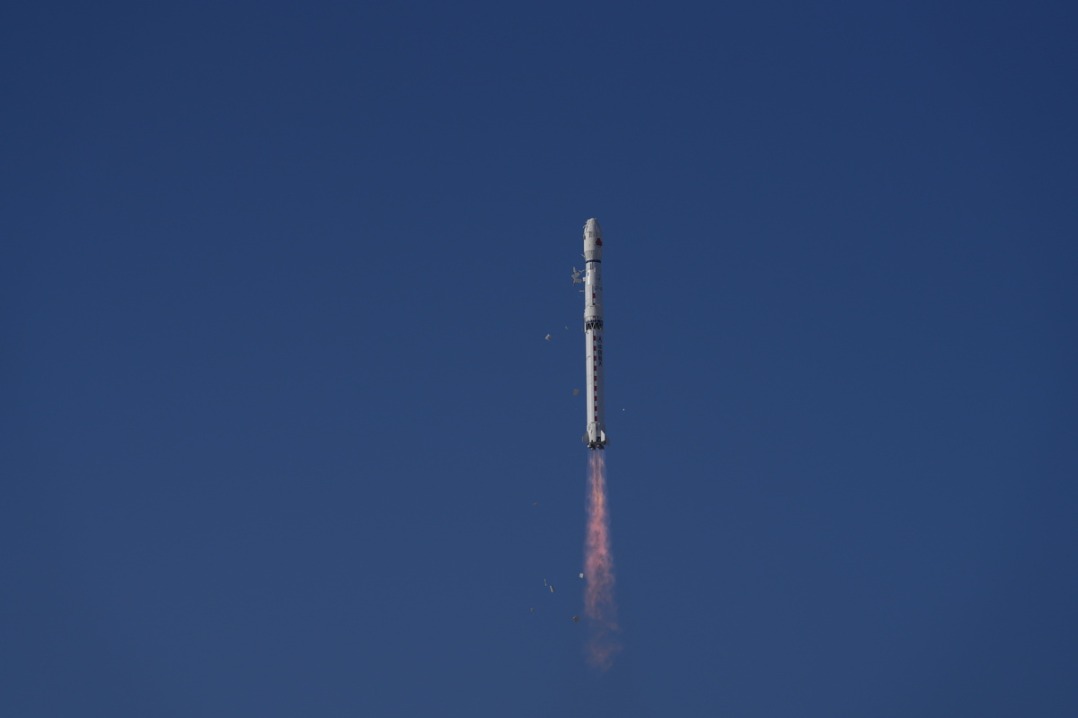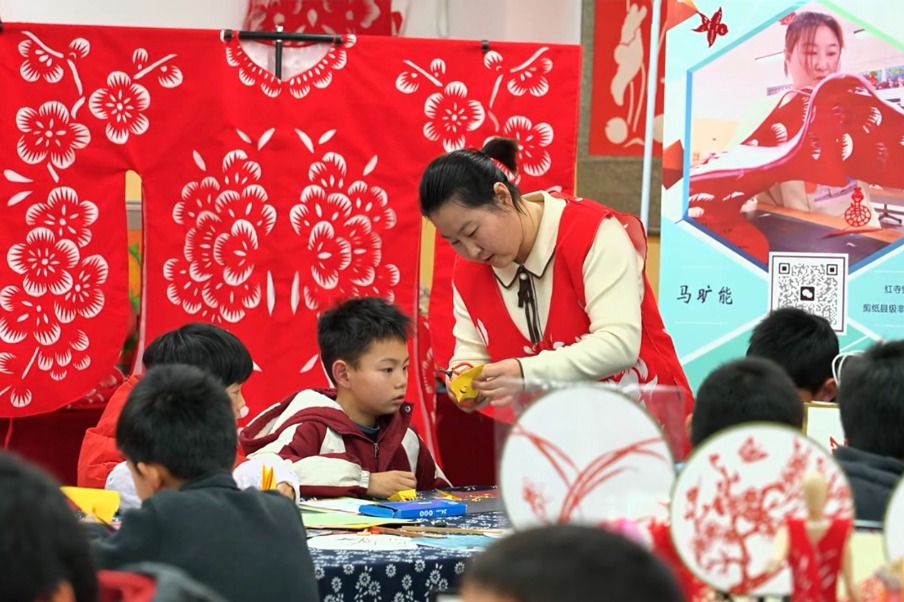Northeast Asia gateway for growth


China is increasingly focusing on building a high-level open economy linking its development to the region
China is firmly promoting free trade and economic globalization while giving priority to integrated development of trade ties with its neighbors, particularly Northeast Asia. This stands out in a world where economic growth is facing serious and strong headwinds because of the challenges of unilateralism and trade protectionism.
Following globalization and a new round of technological revolution, the needs of economic integration have never been at a degree as high as they are today, globally or regionally as in Northeast Asia. What the world needs is coordinated action, not selecting a side or beggar-thy-neighbor.
Against this backdrop, one cannot miss China's continuous moves to build a high-level open economy and further integrate its development with that of the world and of Northeast Asia. In 2018, China's contribution to world economic growth was around 30 percent, making it a major contributor to world economic growth for several years.
China firmly upholds rule-based multilateral trading system with the World Trade Organization as a core institution. It highly values comprehensive planning of integrated development with its neighbors, and prioritizes economic and trade ties with neighboring countries in its efforts to build a new type of economic partnership, most importantly with Northeast Asia.
At a neighboring diplomatic work meeting, President Xi Jinping stressed that China's neighboring countries should benefit from its development; as a result, China will also benefit and get a boost from such common development. As a country with a population of 1.4 billion, a more open China will help accelerate economic and trade cooperation in Northeast Asia.
In fact, China's economic dependence on Northeast Asia has been increasing significantly. For instance, since the financial crisis in 2008, Japan, Republic of Korea, Russia and Mongolia have increased their exports to China from $238.44 billion to $368.74 billion, an average annual growth rate of 4.5 percent and 3.5 times of their overall export growth rate; and the share of their exports to China rose from 15.1 percent to 20.5 percent of their total.
China has now become the largest trading partner for the other five countries in Northeast Asia, and its trade with four of the countries accounts for nearly a quarter of its total trade. Thus it has formed a solid foundation for shared common interests and coordinated development between China and other Northeast Asian economies, and also provides important conditions for solutions to trade frictions between economies in the region. It is also the largest market for Northeast Asia. China's total sales of consumer goods is likely to reach over $5.6 trillion in 2019. The next 10 years could see consumption growth of around $20 trillion as China's continuous market opening has become a major positive factor for continuous growth in Northeast Asia.
An important factor for growth in the region can be the Belt and Road Initiative, as it strategically runs through Asia, Europe and Africa, or through an active East Asian economic circle at one end and a developed European economic circle at the other.
According to some preliminary estimates, by 2030, Asia will see a total economic growth of $15 trillion and a consumption increase of $21 trillion. And Northeast Asia is located just at the meeting point of "the Silk Road Economic Belt" and "the 21st Century Maritime Silk Road". So, the initiative's bilateral cooperation or cooperation with a third-country is a major option to uphold economic globalization.
But there is still a long way to go to build effective regional cooperation mechanisms and achieve regional economic integration in Northeast Asia. It would require coordinated efforts by the six countries in the region.
In recent years, China has been actively promoting the China-Japan-ROK free trade process. Both the GDP and trade of the three economies account for more than 90 percent of the total in the Northeast Asia region. If the China-Japan-ROK Free Trade Agreement is to make a breakthrough soon, it will effectively boost the economic integration in Northeast Asia.
Building a Belt and Road Initiative major passageway in Northeast Asia for infrastructure interconnection is critical. For example, China shall build a major passageway connecting the sea in the east and the islands in the south based on the China-Russia-Mongolia Economic Corridor and build an infrastructure network for the development and opening-up of Northeast Asia.
It should also promote "the development and opening-up of the Tumen River region" and the construction of a "Northeast Asia Economic Corridor" and improve regional multimodal transport efficiency through the coordination and cooperation of customs clearance among the three countries.
The region should also build a Northeast Asia economic and trade cooperation platform based on cross-border economic cooperation zones. For example, China shall promote the construction of cross-border economic cooperation zones in Tumen River region with manufacturing sector as the priority; jointly build up a base for China-Russia and China-Mongolia cross-border assembly manufacturing and logistics and explore the construction of cross-border tourism cooperation parks in Northeast Asia.
The region should also build up several pilot zones of cooperation with third-party markets.
China shall build energy-themed pilot zones by promoting cooperation between China and countries, including Japan, ROK, Russia and Mongolia, and explore cooperation with the Democratic People's Republic of Korea in energy, agriculture and manufacturing.
The region shall accelerate Northeast Asia cooperation in tourism and education and strive to achieve important breakthroughs in harmonizing tourism standards, cross-border movement of personnel, and design of cross-border tourism routes.
The three countries shall establish a China-Japan-Korea Health Industry Alliance, implementing free trade policies for pharmaceuticals, medical devices and needed technical services as well as policies to encourage free flow of medical professionals.
We shall carry out in-depth cooperation in smart manufacturing, achieve breakthroughs in R&D, training and standardization cooperation, and promote the implementation of zero-tariff policy for key components in the manufacturing sector and policies to facilitate the free flow of needed technical professionals.
The region shall deepen cooperation in green industries and environmental governance. For example, we shall jointly promote the construction of an Asia super power grid, carry out cooperation in electric vehicles and smart grids, and strengthen regional cooperation on environmental issues.
The author is president of the China Institute for Reform and Development. The author contributed this article to China Watch, a think tank powered by China Daily. The views do not necessarily reflect those of China Daily.
- Former senior official of Ningxia sentenced to death
- Development program narrows urban-rural gap in Guangdong
- Wuxi Winter Bazaar creates cross-cultural gathering
- Expressway service area featuring a natural hot spring to open soon in Guangdong
- Former Ningxia political advisor sentenced to death for bribery
- Former senior official of Jiangxi expelled from CPC





































